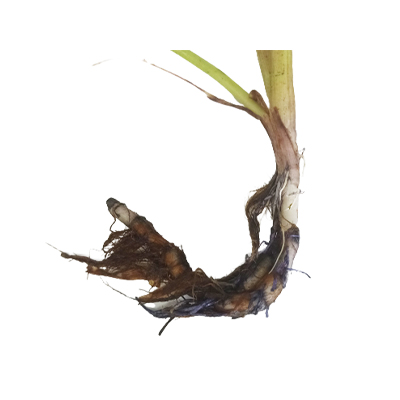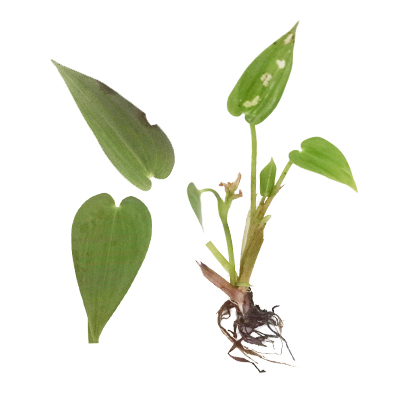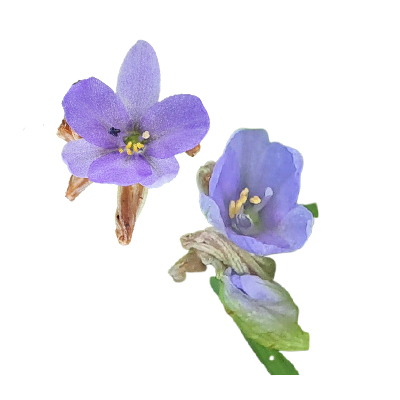Pickerel Weed
Pontederia vaginalis Burm.f.
Pontederiaceae
Location in our garden
Aquatic
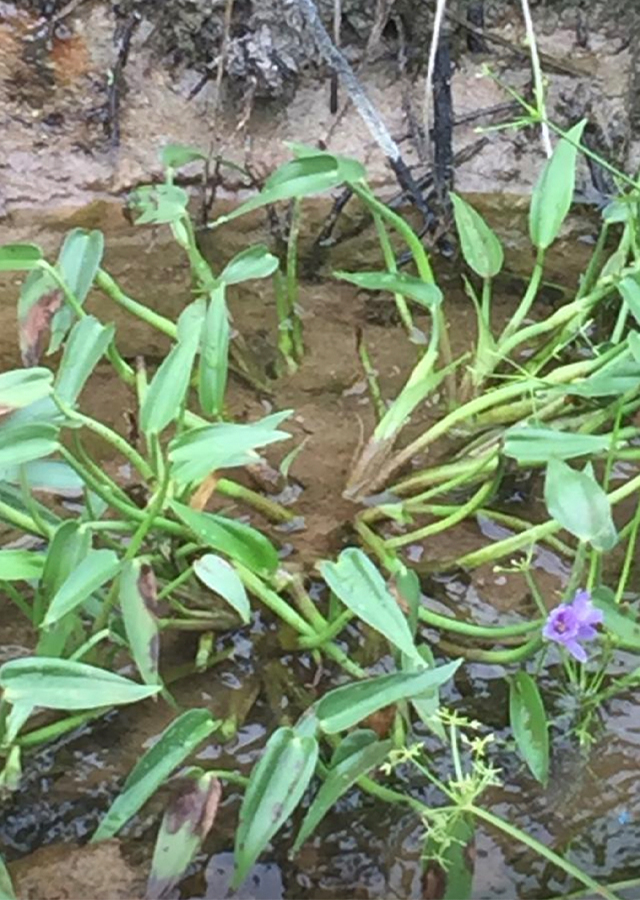
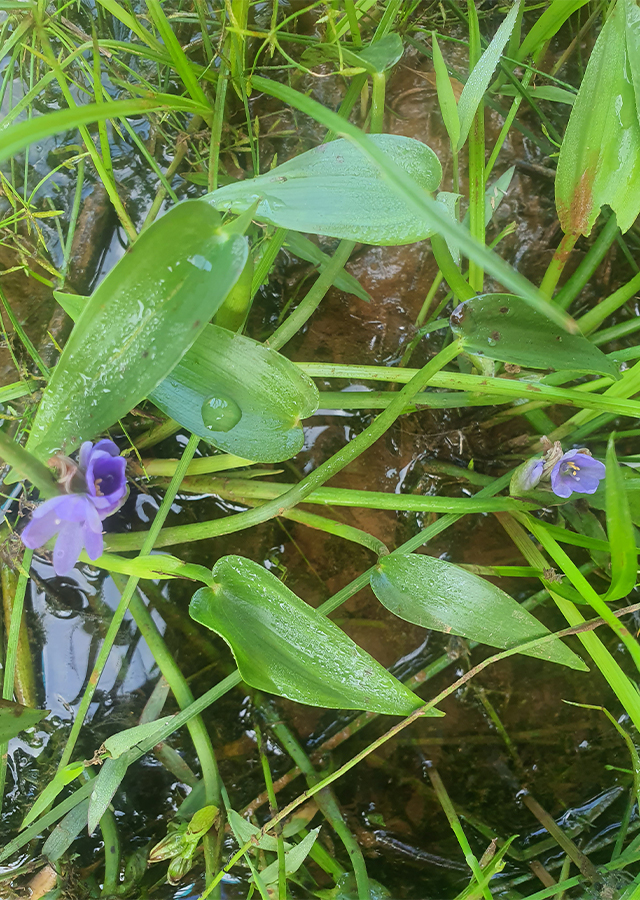
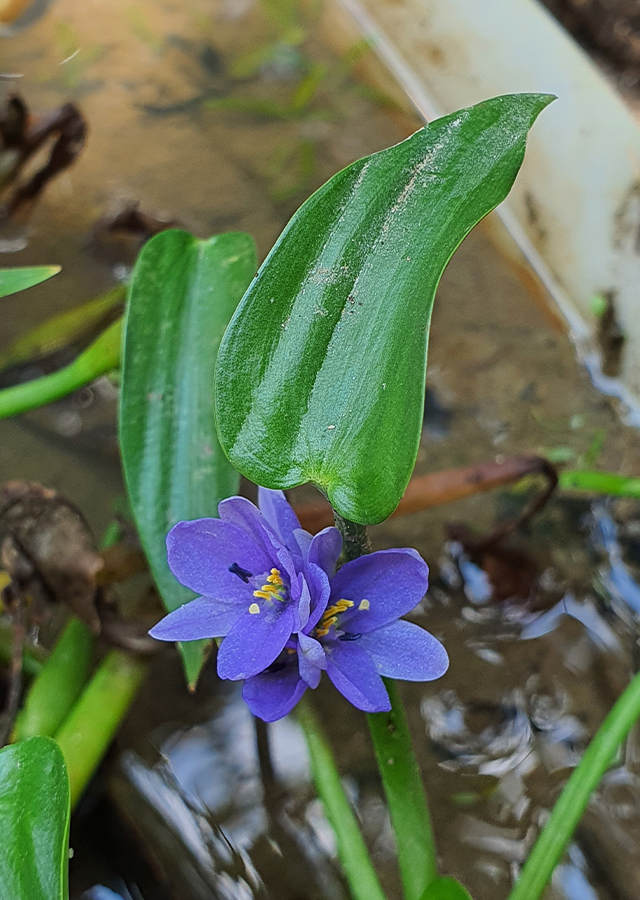
Synonym
Gomphima vaginalis (Burm.f.) Raf.
Monochoria loureiroi Kunth
Monochoria pauciflora (Blume) Kunth
Monochoria vaginalis (Burm.f.) C.Presl
Pontederia cordata Lour.
Pontederia loureiroana Schult. & Schult.f.
Pontederia pauciflora Blume
Pontederia vaginata Royle
Habitus
Aquatic. An annual or perennial herb, stemless, semi aquatic, 10-50 cm tall
Part Used
Leaves
Flowers
Roots
Growing Requirements
Full Sunshine
High Rainfall
Habitat
Aquatic
Overview
This species is native to Asia. It is harvested from the wild as a vegetable crop and for local medicinal use. It is sometimes grown as a vegetable crop in its native range, where it is found for sale in local markets. It is sometimes also planted as an ornamental. Tubers, leaves and aerial parts are eaten, raw or cooked.
Vernacular Names
Kelayar (Malaysia), Panee kachu (Bangladesh), Chrach (Cambodia), Konagi (Japanese), Piralay (Nepalese), Ye she cao (Chinese), Gabing-uak (Philippines).
Agroecology
A plant of the moist tropics, where it is found at elevations up to 1,500 m. It grows best in areas where annual daytime temperatures are within the range 22-35 °C, but can tolerate 13-38 °C. It prefers a mean annual rainfall in the range 1,200-2,000 mm, but tolerates 700-4,000 mm. Succeeds in a sunny position on wet soil and in water, becoming a floating plant in deeper water. Thrives in a fertile, heavy to medium-textured soil. Prefers a pH in the range 5-6.5, tolerating 4-7.
Morphology
- Rhizome/roots - spongy, suberect or creeping, glabrous, shiny appearance and a short rhizome.
- Leaves - extremely variable, long-petioled, linear to ovate, oblong-ovate to broadly ovate, with a sharply acuminate apex and cordate. base, and with broad lobes, 6 to 10 cm long. Petioles are usually less than 30 cm long.
- Flowers - pedicelled, bisexual, flowers number from 3-25 and open simultaneously or from top to bottom in quick succession, with six violet or lilac petals which are spreading at flowering and later spirally contorted. The ovary has a long style, and the capsule (of about 1 cm in size) splits between the partitions into three valves.
- Fruits - capsules. oblong.
- Seeds - numerous and longitudinally ribbed.
Cultivation
- By seeds - best sown as soon as it is ripe.
- By division and cuttings.
Chemical Constituents
Alkaloids, phenols, glycosides, tannins, flavonoids, terpenoid, saponin, cerebrosides, and others.
Traditional Medicinal Uses
- Root stock and leaves are cooling, bitter, sweet, aromatic, alterant, diuretic and tonic.
- In Java, roots are used for stomach and liver complaints and toothache. Leaves with ginger and honey taken for cough and cold.
- In India, used for burns and scalds; general debility, asthma, fever, hemorrhage, dipsia, strangury, gastropathy, hepatopathy, odontalgia, scurvy and hemorrhages.
- In Tamil Nadu, paste of tuber is used externally as antidote to snakebite poisoning .
- In Tripuri, India, decoction of fresh roots is used for nausea. Whole plant is cooked by tribal people and used in digestive disorders. Young shoots used for gastritis and asthma.
- In the Siddha system, roots is used for cough, disease of pittam, venereal afflictions, thirst, fainting, and fever.
- In Ayurvedic and Unani medicine, root is chewed for toothaches and sugared bark for asthma.
Part Used
Reference Sources
- CABI. (No date). Invasive Species Compendium. Monochoria vaginalis (pickerel weed). https://www.cabi.org/isc/datasheet/34807. 01-03-2021.
- Fern, Ken. (2014). Useful Tropical Plants: Monochoria vaginalis. http://tropical.theferns.info/viewtropical.php?id=Monochoria%20vaginalis. 01-03-2021.
- POWO (2021). Plants of the World Online. Facilitated by the Royal Botanic Gardens, Kew. Published on the Internet; http://www.plantsoftheworldonline.org/.
- StuartXchange. (2018). Philippine Medicinal Plants. Gabing-uak. http://www.stuartxchange.org/Gabing-uak.html. 01-03-2021.
